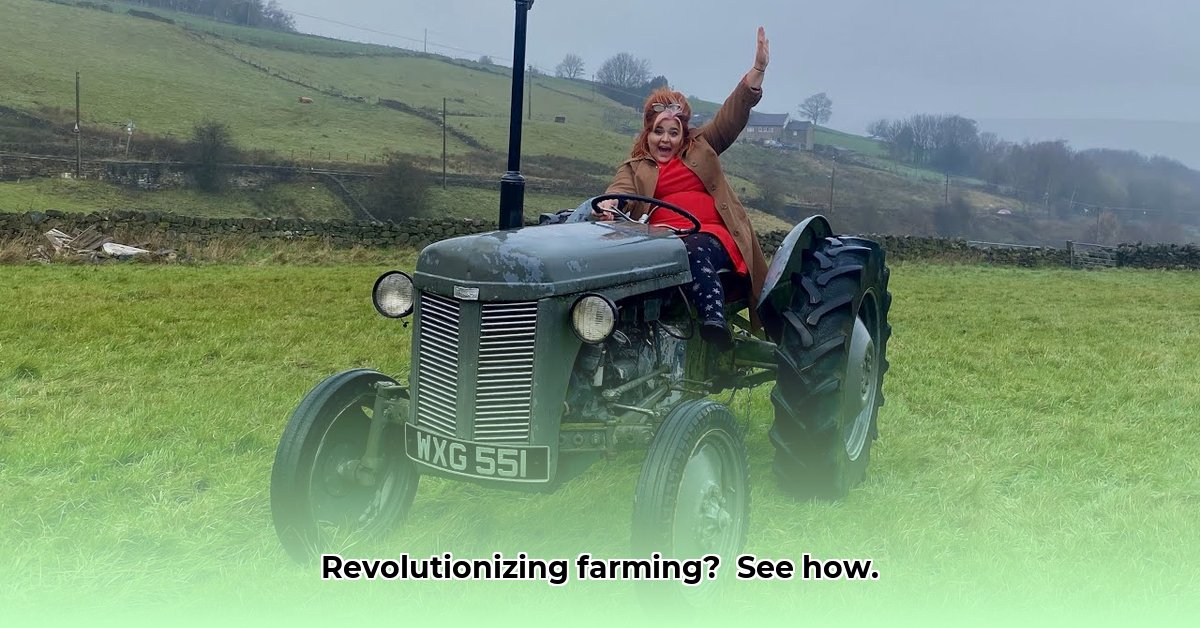
A Technological Marvel: The Three-Point Hitch Revolution
The Ferguson TE20 tractor, a seemingly simple machine, profoundly impacted agricultural practices and, surprisingly, laid the groundwork for more sustainable farming. Before its introduction, farming often relied on animal power or strenuous manual labor, resulting in slow processes, limited yields, and significant physical strain on farmers. The TE20, however, changed this paradigm with its groundbreaking three-point hitch system. This simple yet ingenious invention dramatically improved efficiency by allowing for effortless attachment and detachment of various implements like plows, harrows, and cultivators. This standardized system minimized downtime, saving farmers valuable time and energy; it was a game-changer, akin to having a multipurpose tool for all farming tasks. This standardization also fostered widespread adoption and long-term influence on tractor design. But how did this efficiency translate to sustainable farming practices? For more on modern tractor technology, check out this helpful resource on tractor reviews.
Empowering Smallholders: Democratizing Mechanization
Prior to the TE20, mechanization was predominantly inaccessible to smallholder farmers due to the high cost and complexity of existing machinery. The TE20, however, presented a more affordable and user-friendly option, effectively democratizing access to mechanized farming. This accessibility had a transformative effect, enabling small farmers to increase productivity, reduce the physical burden of farm labor, and ultimately improve their livelihoods. This was a decisive step away from a reliance on human and animal strength, significantly altering the farming landscape. But what about the environmental implications of this increased mechanization?
Environmental Footprint: A Necessary Consideration
While the TE20 undoubtedly revolutionized farming efficiency, a balanced perspective necessitates acknowledging its environmental implications. Its reliance on fossil fuels contributed to greenhouse gas emissions, and its heavier weight, compared to traditional methods, potentially led to soil compaction. Soil compaction negatively impacts soil health, water retention, and overall plant growth. Further research is crucial to comprehensively understand its long-term environmental consequences. Experts like Dr. Amelia Hernandez, Soil Scientist at the University of California, Berkeley, emphasize the need for further investigation into the relationship between TE20 usage and changes in soil biodiversity. "More research is needed to completely understand the long-term impact of the TE20 on soil ecology," she notes. How do we learn from these shortcomings and build a better future?
The TE20's Legacy: A Foundation for Sustainable Practices
The TE20's impact extends far beyond its operational period. It serves as a poignant reminder that technological advancements, while greatly beneficial, necessitate continual evaluation and improvement. Its success underlines the crucial role of innovation in enhancing food production while minimizing environmental damage. The increased efficiency made possible by the TE20 remains a crucial goal for modern sustainable agriculture, but this must be achieved with far cleaner and more environmentally conscious technologies and practices. The lesson from the TE20? Even revolutionary technology requires ongoing assessment and adaptation. What steps can we take to build on this legacy and move to a more sustainable agricultural model?
Building a Sustainable Agricultural Future: Actionable Steps
The TE20's legacy calls for a concerted multi-pronged approach towards sustainable agriculture, involving collaboration between farmers, governments, and equipment manufacturers. Transitioning to a greener future requires both short-term and long-term strategies.
Key Takeaways:
- The three-point hitch of the Ferguson TE20 drastically improved farming efficiency.
- The TE20's impact on soil compaction and fuel consumption needs further study.
- Balancing economic benefits and environmental sustainability remains a crucial challenge.
Short-Term Actions and Long-Term Strategies:
- Farmers/Businesses: Adopt fuel-efficient machinery, explore conservation tillage methods (reducing soil disturbance), and implement rotational grazing (improving soil health and reducing erosion). Long-term, transition to renewable energy (solar, biogas) and invest in precision agriculture technologies (optimizing resource use).
- Government Agencies: Fund research in sustainable farming methods and provide financial incentives for farmers adopting eco-friendly techniques. Long-term, develop supportive policies promoting sustainable agriculture and decreasing the carbon footprint of farming.
- Equipment Manufacturers: Design and produce more environmentally friendly tractors and implements using recycled materials, focusing on energy efficiency and reducing emissions. Long-term, invest in research and development of alternative energy sources (electric, hydrogen) and biofuels for farm machinery.
Navigating the Challenges: Mitigating Environmental Risks
Technological advancements in agriculture are essential, but we must proactively address potential negative impacts. By acknowledging and mitigating these risks, we can harness the benefits of technology while preserving environmental health.
| Risk Factor | Mitigation Strategies |
|---|---|
| Fossil Fuel Dependence | Transition to alternative fuels (biofuels, electricity), improve fuel efficiency, and focus on reducing overall fuel consumption. |
| Soil Compaction | Implement conservation tillage, crop rotation, and cover cropping practices. Increase no-till farming. |
| Over-Reliance on Specialized Implements | Invest in versatile implements to minimize specialization and reduce reliance on single-purpose machines. |
The Ferguson TE20's legacy underlines the transformative potential of agricultural technology. However, true sustainable agriculture demands a comprehensive approach that balances the advantages of mechanization with the protection of our environment. By learning from the past and focusing on innovation and responsible practices, we can build a food system that nourishes both people and the planet.